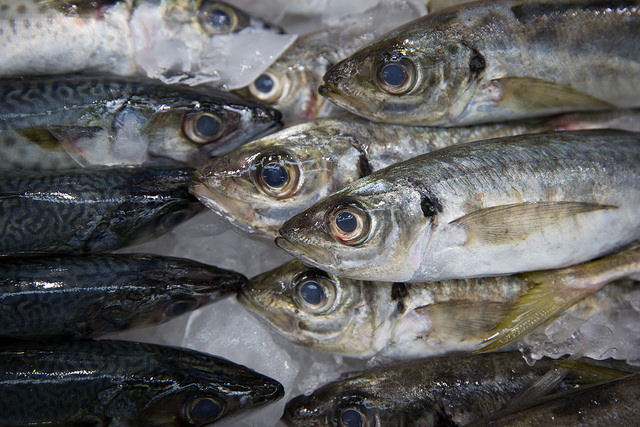An inquiry on the future of aquaculture in Nova Scotia will report this spring, not a minute too soon. Fish farming, an industry of huge promise in a province with uniquely varied waters, has been set back by public policy obsessed with Big Salmon.
Here’s a peek at the promising part.
Just down the salt-water lake from me here at Ste-Anne-du-Ruisseau, Yarmouth County, Nolan d’Eon’s “Ruisseau oysters” have shown up in fancy dining magazines in Toronto along with Malpeque and Bras d’Or. He’s creating a brand on a very small area of water.
Fifteen minutes down the road at Charlesville, on the Yarmouth-Shelburne County line, there’s Acadian Seaplants, a world player known mainly for supplying the Asian market with an array of brightly coloured seaweeds, grown in tanks and used in salads.
Another short jaunt brings you to Clark’s Harbour and Scotian Halibut, a company created by a partnership of established players in the Nova Scotia fishery. It has breeders of monstrous size and, having mastered the difficult art of reproducing halibut in captivity, sells juveniles to Norway and Scotland, among others. General manager Brian Blanchard says the company started early and has the best halibut broodstock in the world. But he feels unloved by public opinion, government policy and the media. “The Norwegians would love us to move there,” he says ominously.
Down the road, every little stretch of the entire Nova Scotia coast will reveal surprising success stories like this, usually with an owner of a growing and innovative operation feeling unloved.
True, Nova Scotians have been slow to embrace fish farming, something at odds with the romance of the wild fishery. However, the abrupt arrival of open-pen salmon farms in shallow, poorly flushed bays, against scientific advice in many cases, and preceded by an established reputation elsewhere for pollution, toxic metals and chemicals, disease, lice and negative effects on wild salmon, has tarnished the entire industry in the public mind.
“Aquaculture” and open-pen salmon are conflated in the headlines as one and the same, a confusion first sown by the Dexter government when faced by the uproar against open-pen farms and furthered by Cooke Aquaculture, the big salmon farm player. If you’re against open-pen salmon farming, it is charged, you’re “against aquaculture,” not to mention against progress itself.
But is this progress? Since the mid-1990s, the federal government has paid out some $110 million to compensate the industry in Atlantic Canada for fish afflicted with infectious salmon anemia. Add what the provinces have contributed (Nova Scotia has $25 million on the table for expansion), and that would likely reach $200 million and more. Keeping in mind that the Canadian Food Inspection Agency last year fell on a novel way to stop paying Ottawa’s money: they just allowed the sick salmon to go to market.
Wherever there’s a big open-pen industry, there’s trouble. In Norway, the world’s salmon farm powerhouse, the health department last summer recommended that women of childbearing age limit their consumption after research showed high levels of contaminants in farmed salmon. Four major grocery chains threatened to stop carrying salmon unless grown in closed containment. A study in Scotland showed the same. And here — where there are no studies?
The solution is indeed to contain these fish, either at sea or on land. It’s being done now, even in Nova Scotia, on a small scale. Denmark is building a huge salmon industry with very little pollution. But the big players’ story is that it’s too expensive. The truth is that using the ocean as a sewer and the taxpayer as a bank is too profitable to give up.
Meanwhile, for the others working in the shadows of all this, it’s a conundrum. Some blame Cooke for tarnishing them with the dirty brush, some defend Cooke and blame negative public attitudes.
Angela Bishop, executive director of the Aquaculture Association of Nova Scotia, of which Cooke is not a member, doesn’t want to point fingers, but allows that “if Nova Scotians are less trustful of our sector because of actions of one member, then that’s a problem.”
The AANS, she says, is working on a strategy to promote the “small/medium and innovative” companies that make up her membership with the accent on high-tech and outreach to communities — especially the involvement of communities. This is pretty well the opposite of everything that open-pen salmon represents.
Before anything can truly move ahead, however, there must be a proper regulatory regimen — federal and provincial. Issues related to financing, plus other tangled matters, must be worked out to resemble agricultural programs. The report by Meinhard Doelle and William Lahey of Dalhousie University is due later this spring. Hopefully, it will point the way out of the impasse, keeping in mind that Big Salmon has powerful lobbies and has frustrated progress in other jurisdictions.
Ralph Surette is a freelance journalist in Yarmouth County. This article was first published in the Chronicle Herald.
Photo: Alex E. Proimos/flickr




